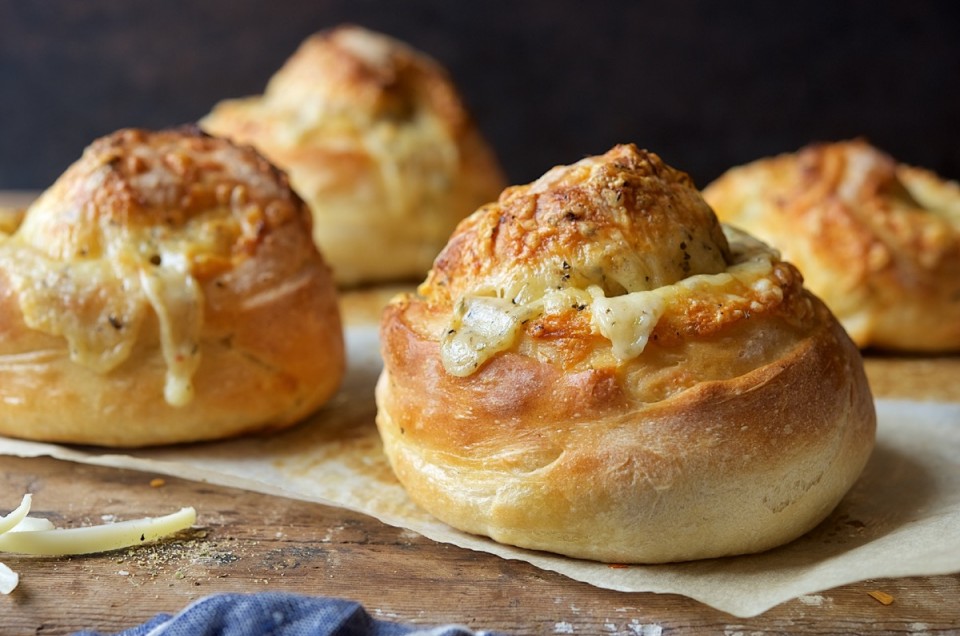



What do these three things have in common?
Well, they all include the letter "a," it's true. But beyond that, their real common denominator is self-evident:
Melted cheese.
Who can resist? Whether you're scooping up a spoonful of macaroni and cheese, dipping a chunk of bread into cheese fondue, or sighing over a plate of mozzarella-laden lasagna, there's just nothing like hot melted cheese.
Combine melted cheese with fresh-baked bread, and you've got a combination that simply can't be beat. Take it one step further — have the melted cheese actually ooze out of the hot bread with each and every bite — and you've reached baking bliss.
Need I say more? No, I didn't think so. Let's make Gruyère-Stuffed Crusty Loaves.
Gather your starter ingredients:
1 1/4 cups (149g) King Arthur Unbleached Bread Flour*
1 teaspoon salt
1/2 teaspoon instant yeast
1/2 cup (113g) cool water
*No bread flour? Substitute King Arthur Unbleached All-Purpose Flour, both here and in the dough below; use the lesser suggested amount of water. The finished loaves may not rise quite as high, and may be slightly less chewy.
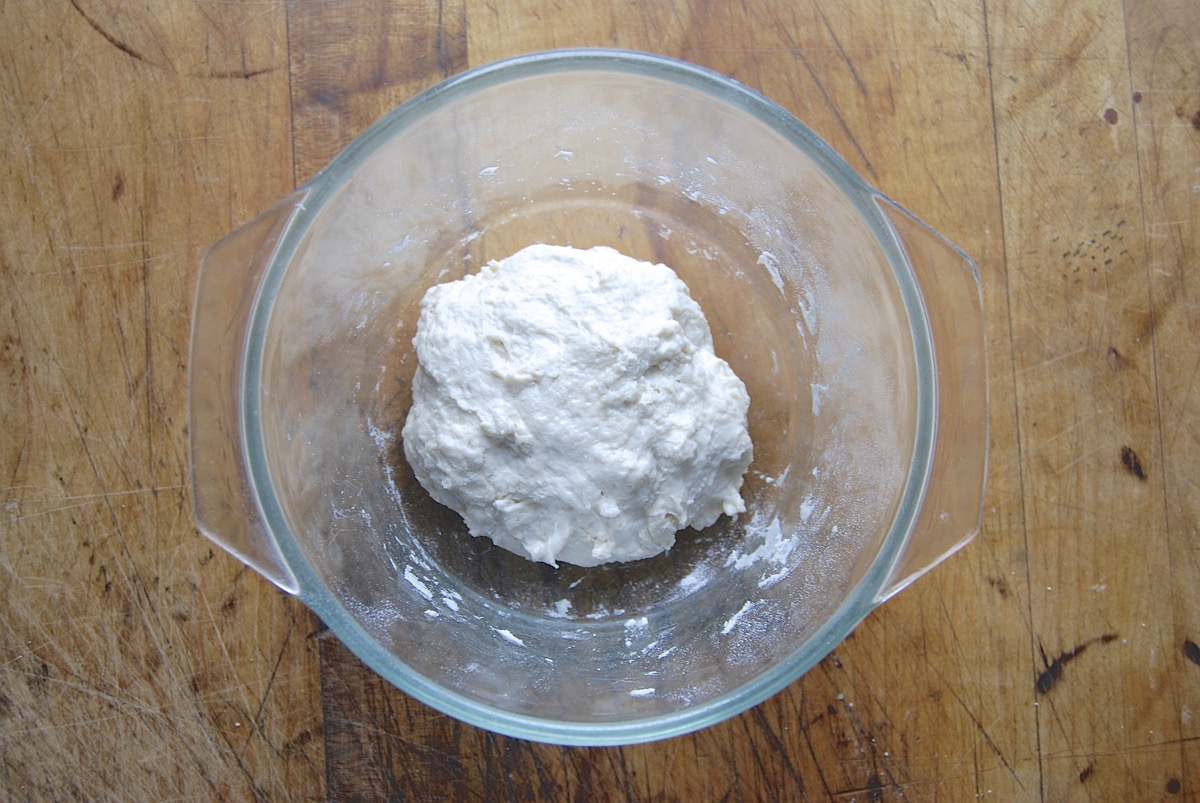
Mix everything until well combined; the starter will be stiff, not soft/liquid. (If you've used all-purpose flour, the starter may seem a bit softer.)
Cover with plastic wrap and let rest overnight at room temperature (65°F to 75°F is ideal).
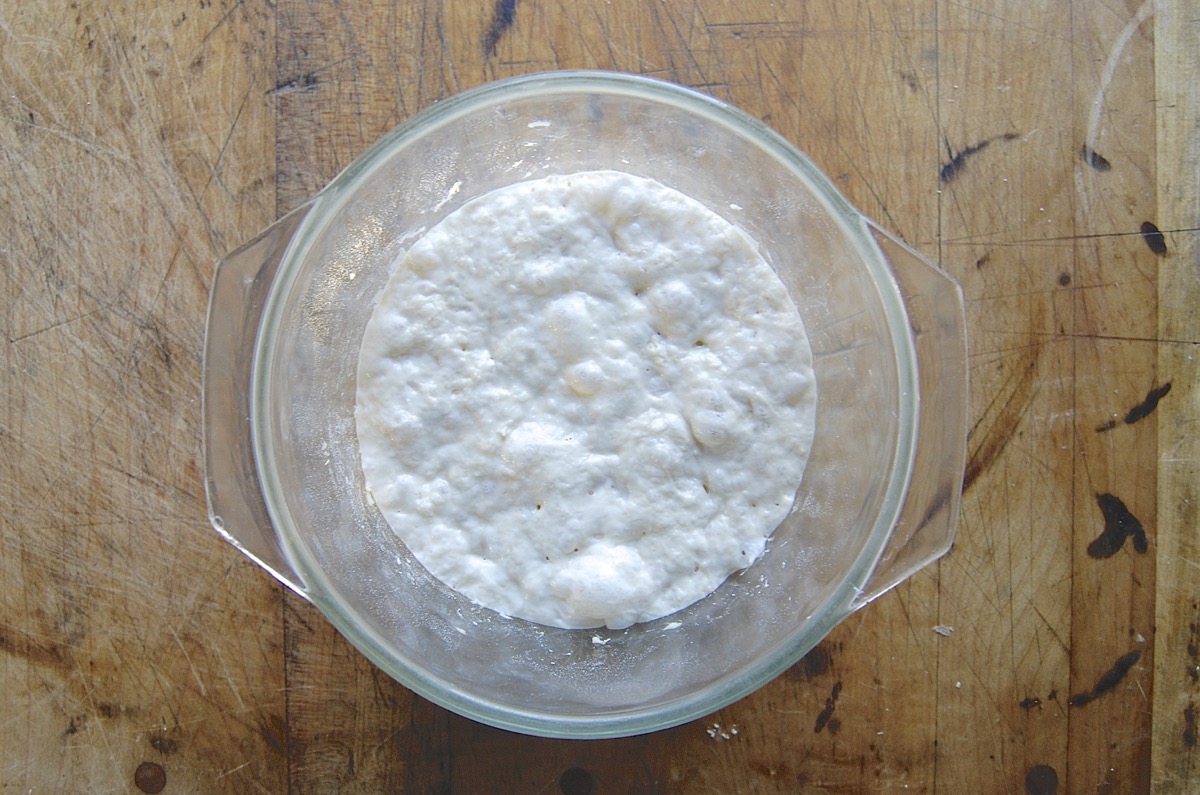
Next day, your starter should have expanded and become somewhat puffy/bubbly.
Gather your dough ingredients:
all of the starter (above)
1 cup + 2 tablespoons to 1 1/4 cups (255g to 284g) lukewarm water*
1 teaspoon salt
3 1/2 cups (418g) King Arthur Unbleached Bread Flour
1 tablespoon Pizza Dough Flavor, optional
1/2 teaspoon instant yeast
*Why the range in water amount? Flour is like a sponge; it absorbs moisture from the atmosphere when the weather is hot and humid, and dries out when it's cold and dry outside. This time of year (winter), you'll probably use the greater amount of water; but start with the lesser amount, adding more as needed to make a soft, smooth dough. The dough should be somewhat sticky; but not so sticky that it coats/sticks to your hands and/or work surface.
Combine the risen starter with the water, salt, flavor (if you're using it), flour, and yeast. By the way, what IS Pizza Dough Flavor? It's a cheese-y, garlicky flavor that enhances the flavor of pizza crust, or any kind of savory bread — like this one.
Knead the mixture — by hand, mixer, or bread machine set on the dough cycle — to make a smooth dough.
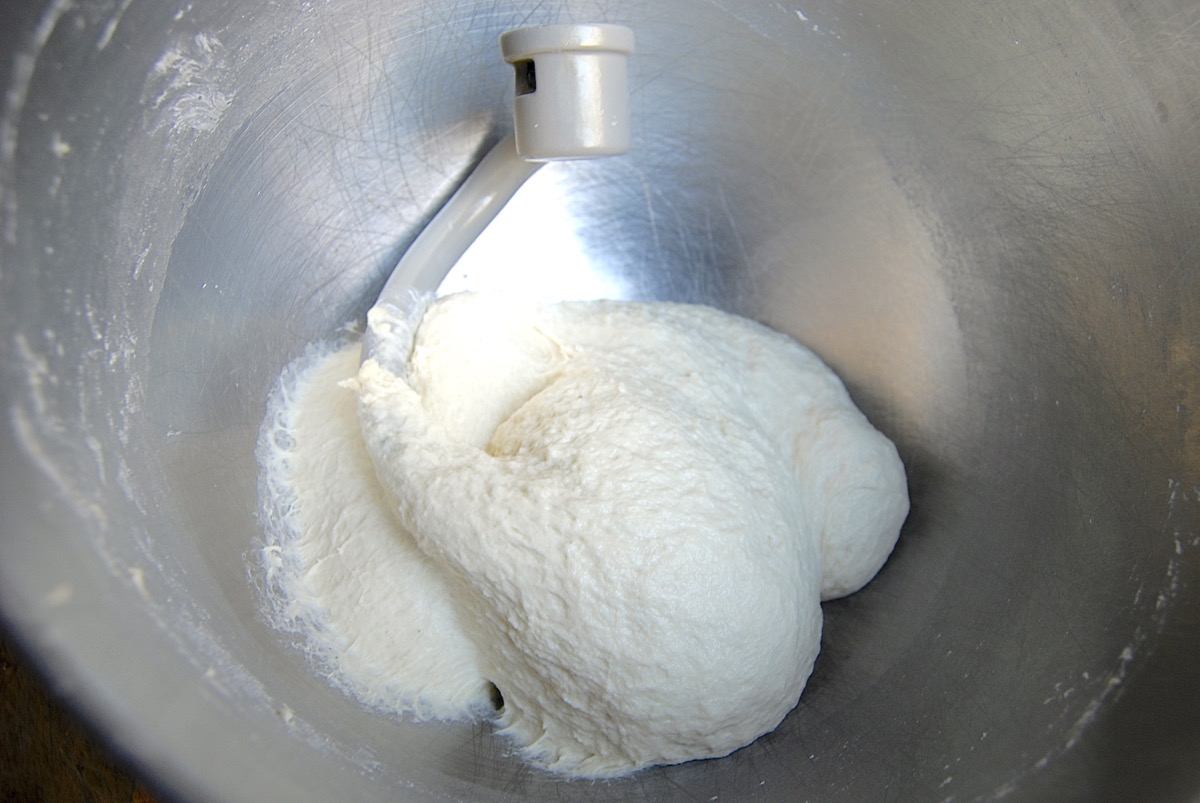
See how the dough is clinging just a bit to the mixer bowl? That's the texture you want: soft, but not so sticky that you can't handle it.
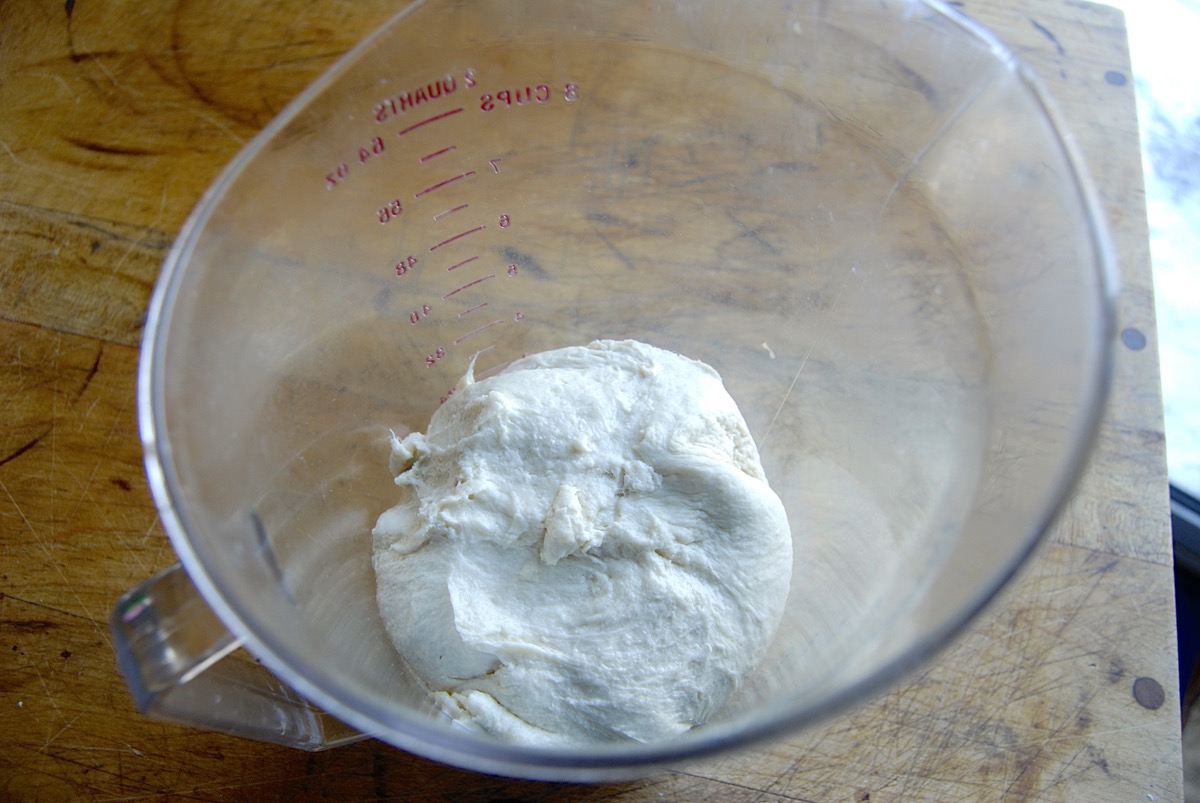
Place the dough in a lightly greased bowl (or large measuring cup, or dough-rising bucket, and cover it.
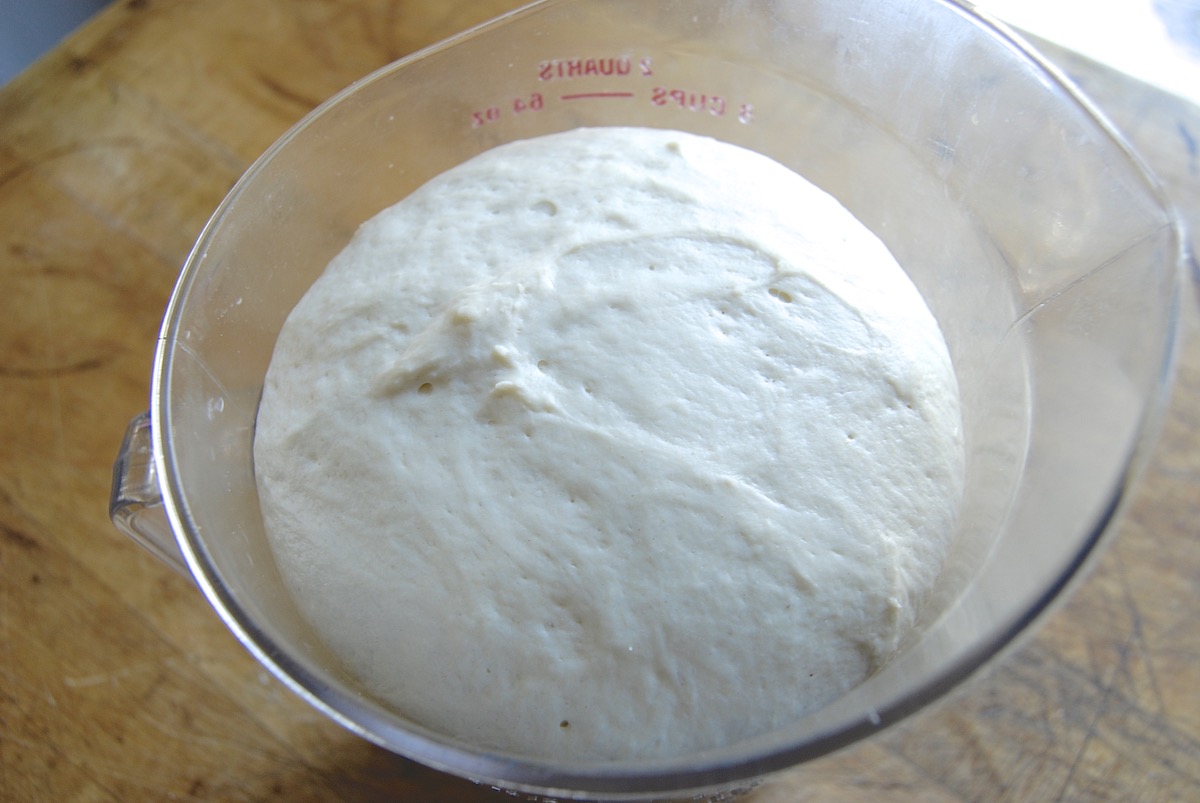
Give it enough time to nearly double in bulk, about 1 1/2 to 2 hours.
Gently deflate the dough.
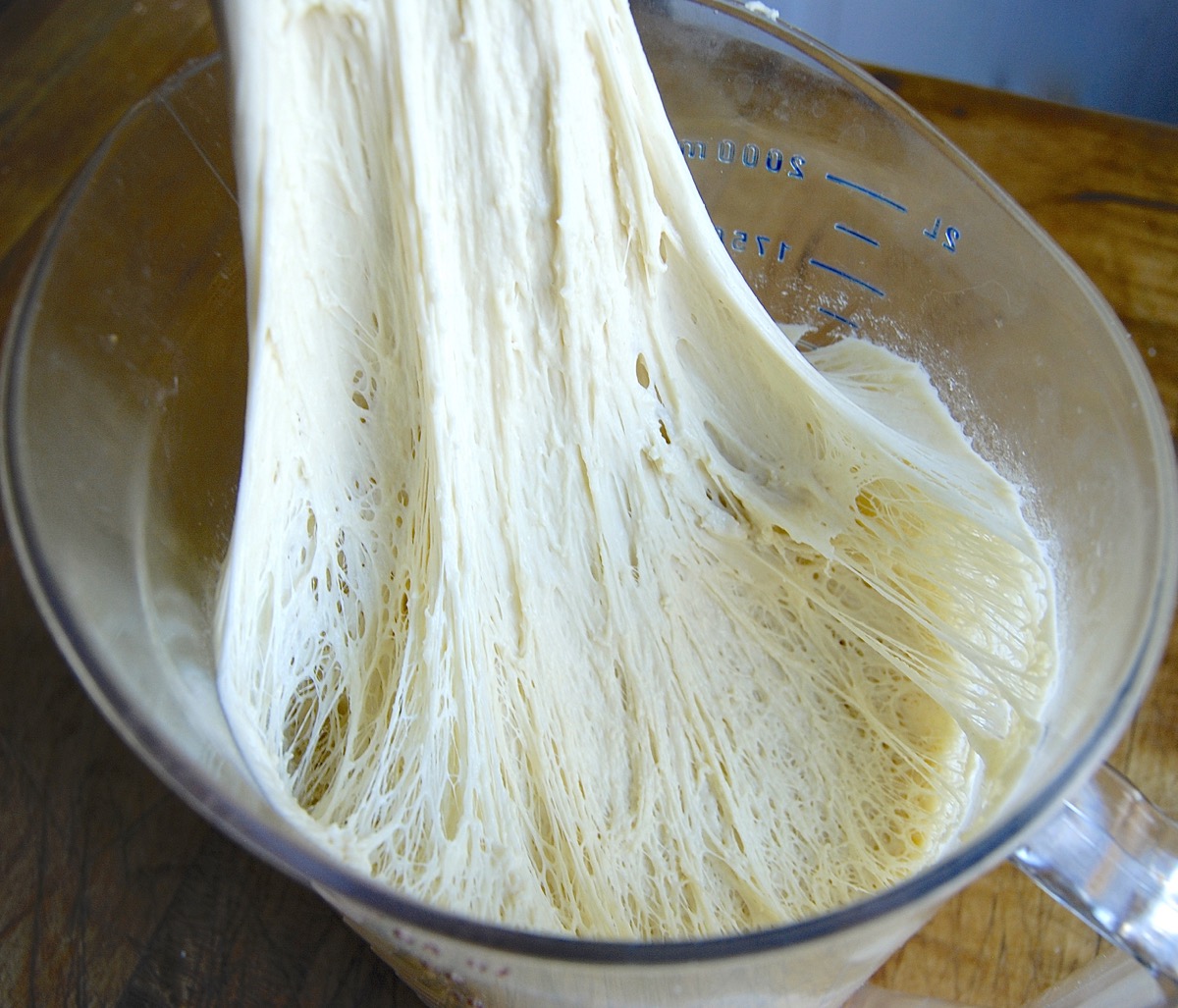
WOW, look at that gluten! The extra protein in bread flour translates to lots of stretchy gluten.
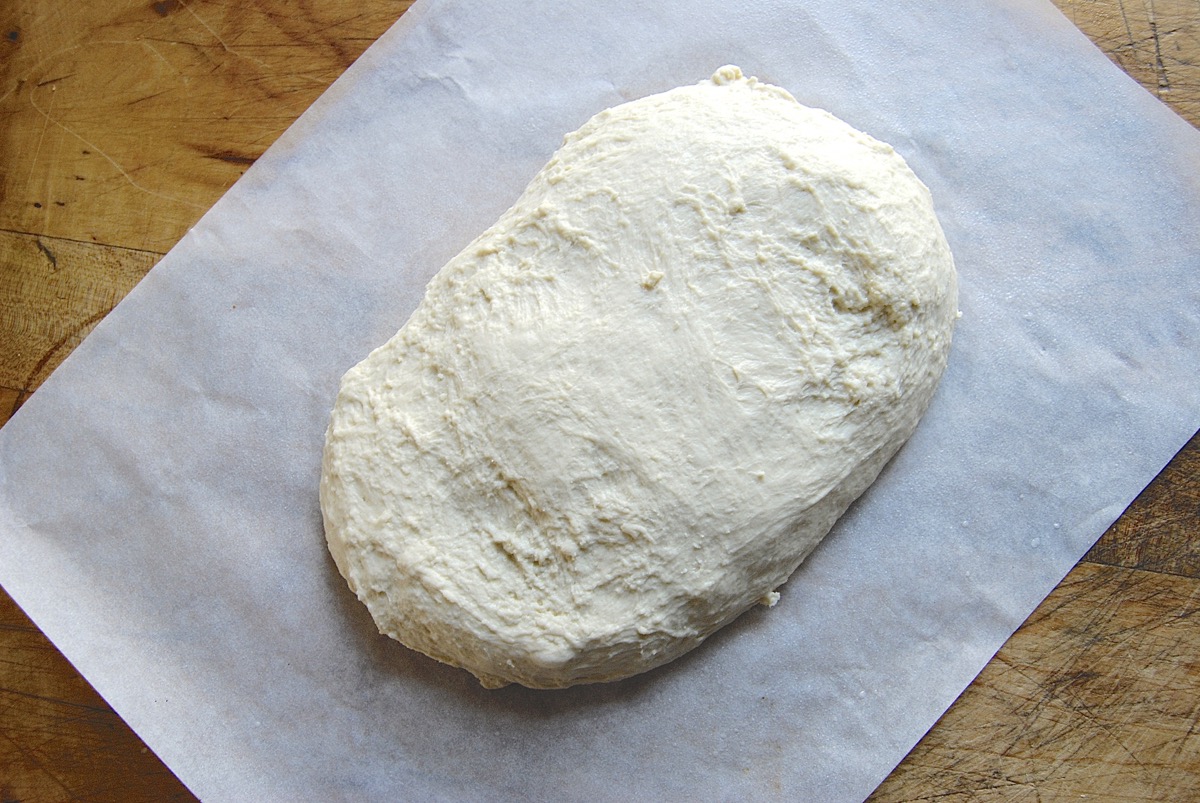
Turn the dough out onto a lightly floured surface, or a piece of parchment. If your dough is on the stickier side and seems a bit hard to handle, lightly grease the parchment.
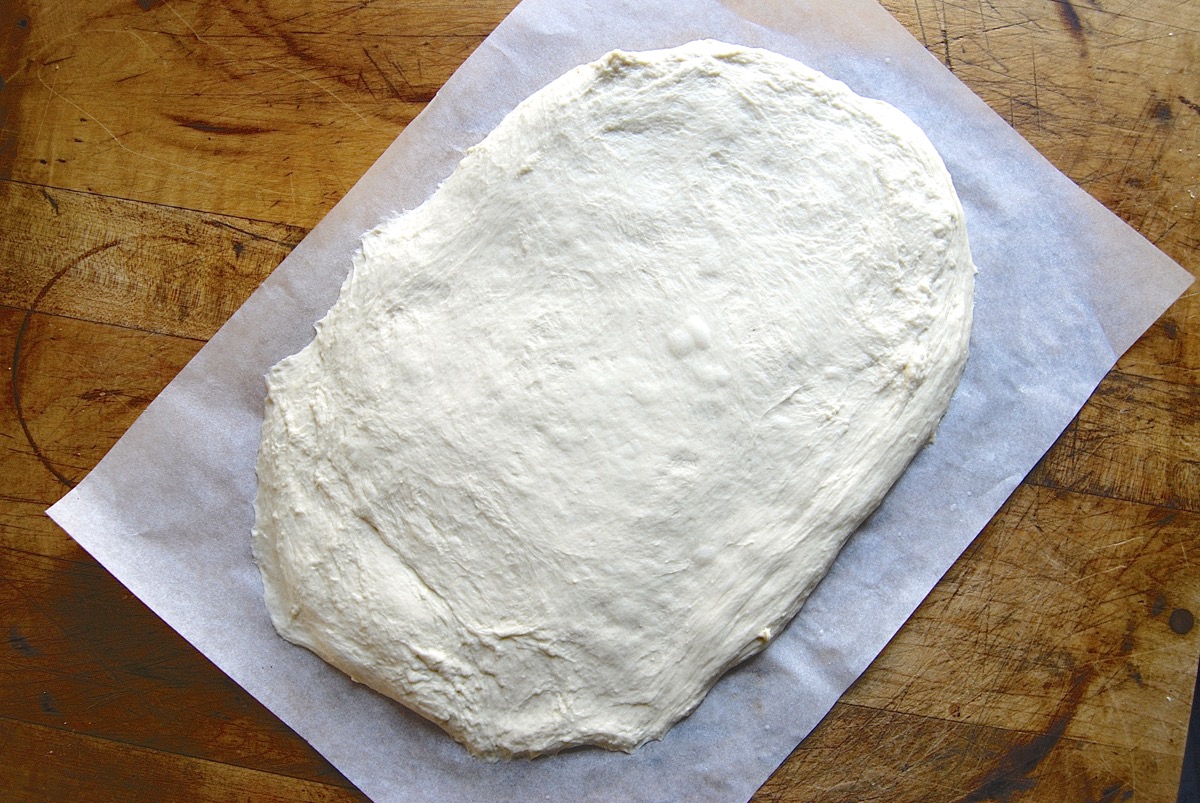
Pat and stretch it into a 3/4"-thick rectangle, about 9" x 12".
Next, ready your filling.
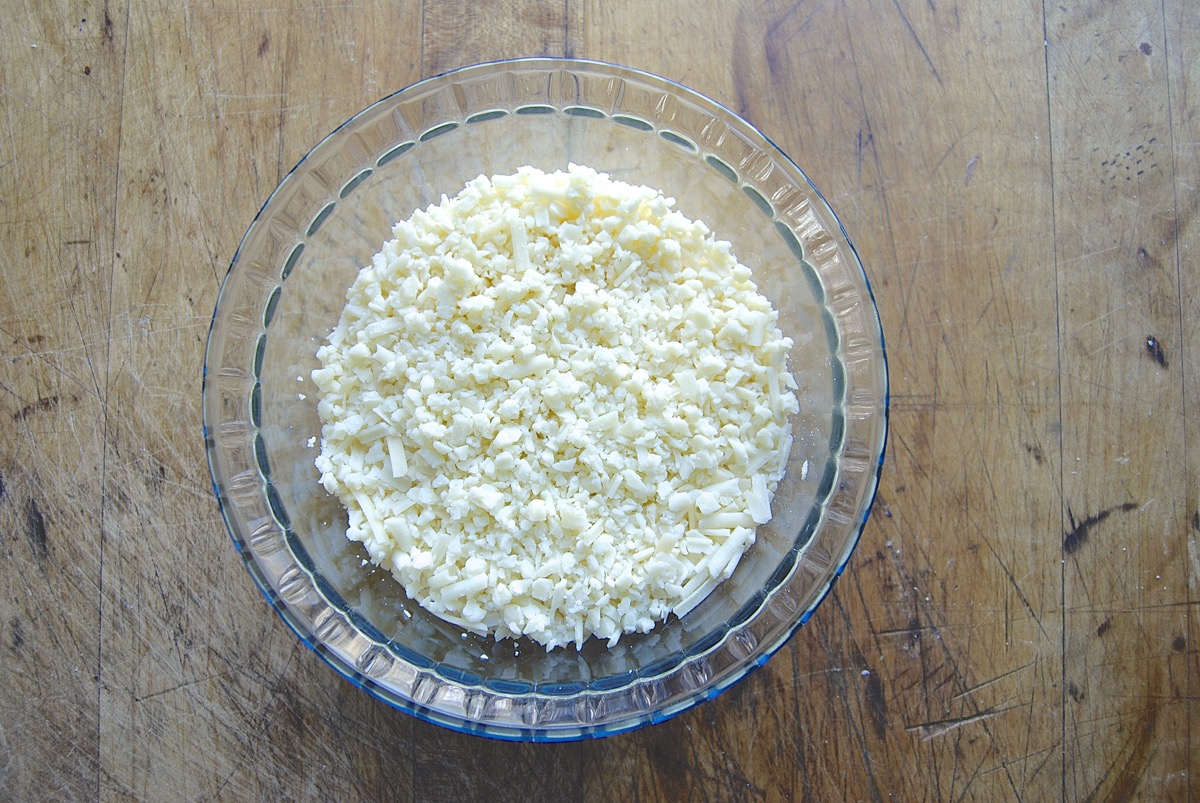
Here's what you'll need:
2 1/2 cups (283g) grated Gruyère cheese, or the grated/shredded cheese of your choice (sharp cheddar, or a mixture of provolone and mozzarella are tasty)
1 tablespoon garlic oil (optional)
1 tablespoon Pizza Seasoning (optional)
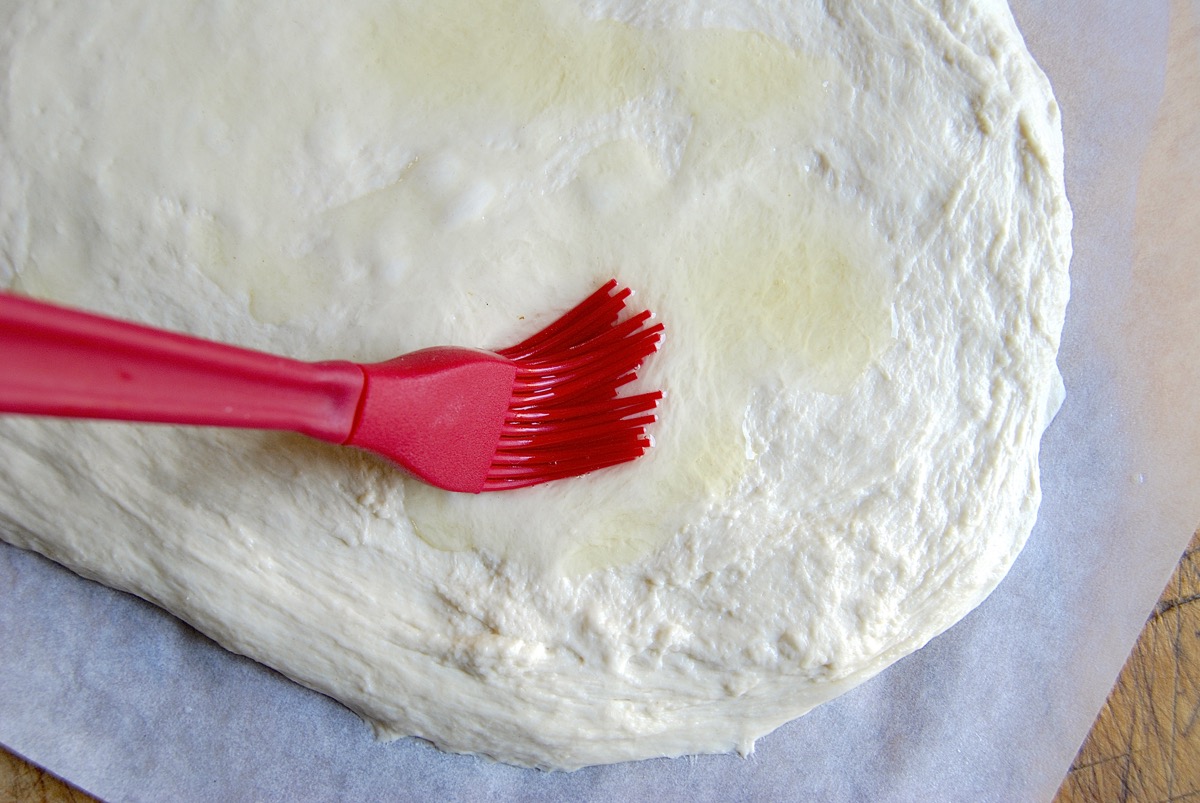
Spritz the dough with water (or brush it with garlic oil).
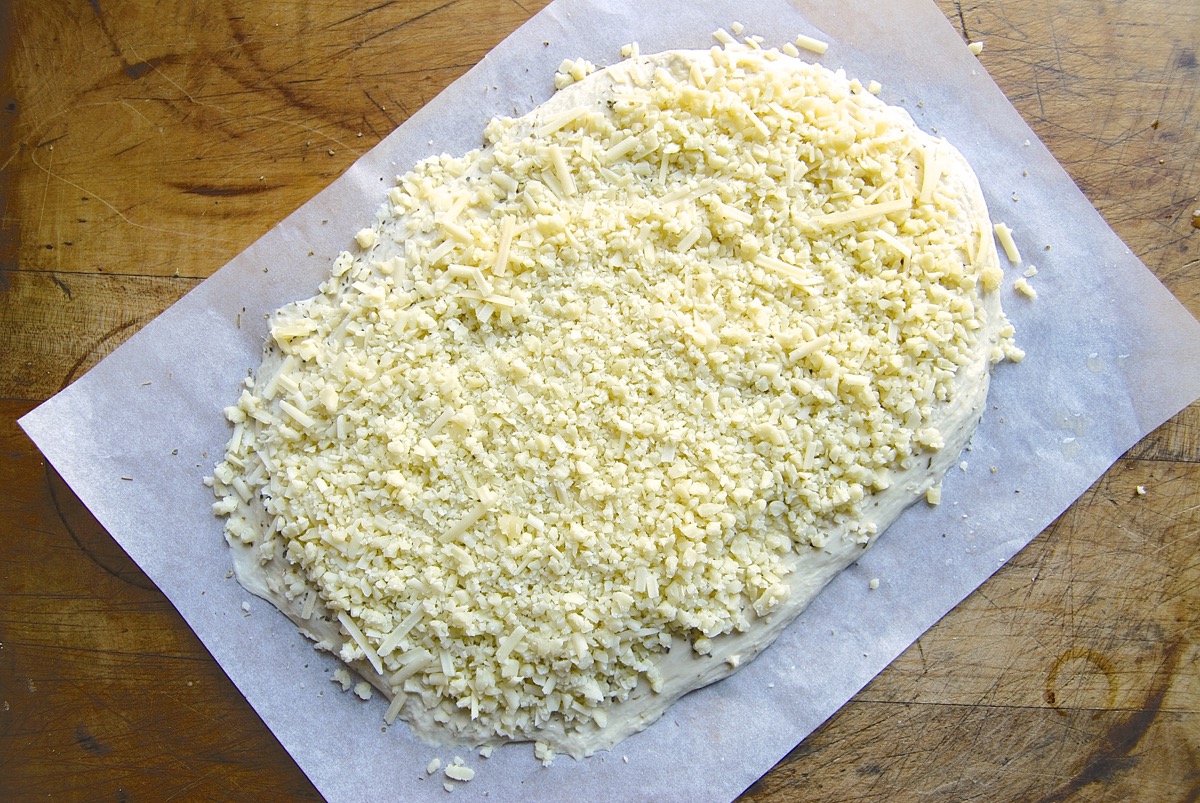
Sprinkle with the grated cheese (and seasoning, if you're using it).
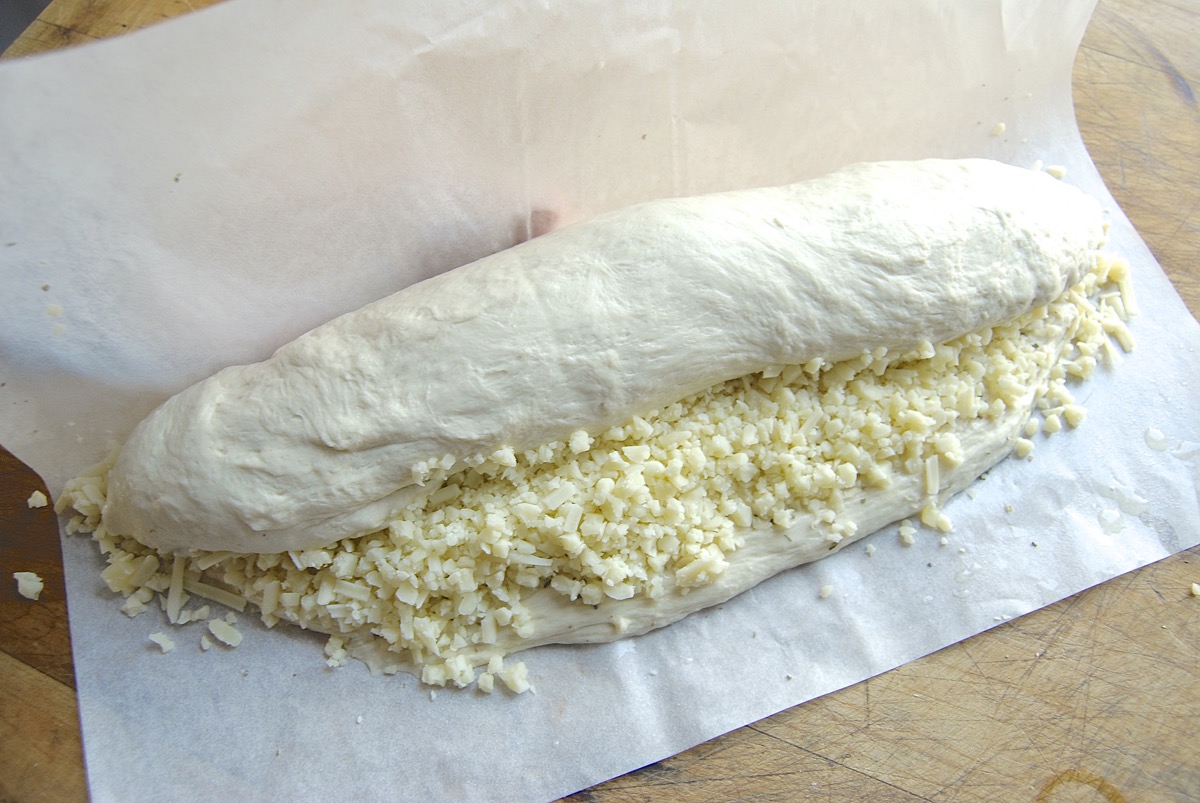
Starting with a long side, roll the dough into a log; use the parchment to help you with this. The cheese will try to fall out; that's OK, just try to enclose as much as possible, then pack any errant cheese into the ends.
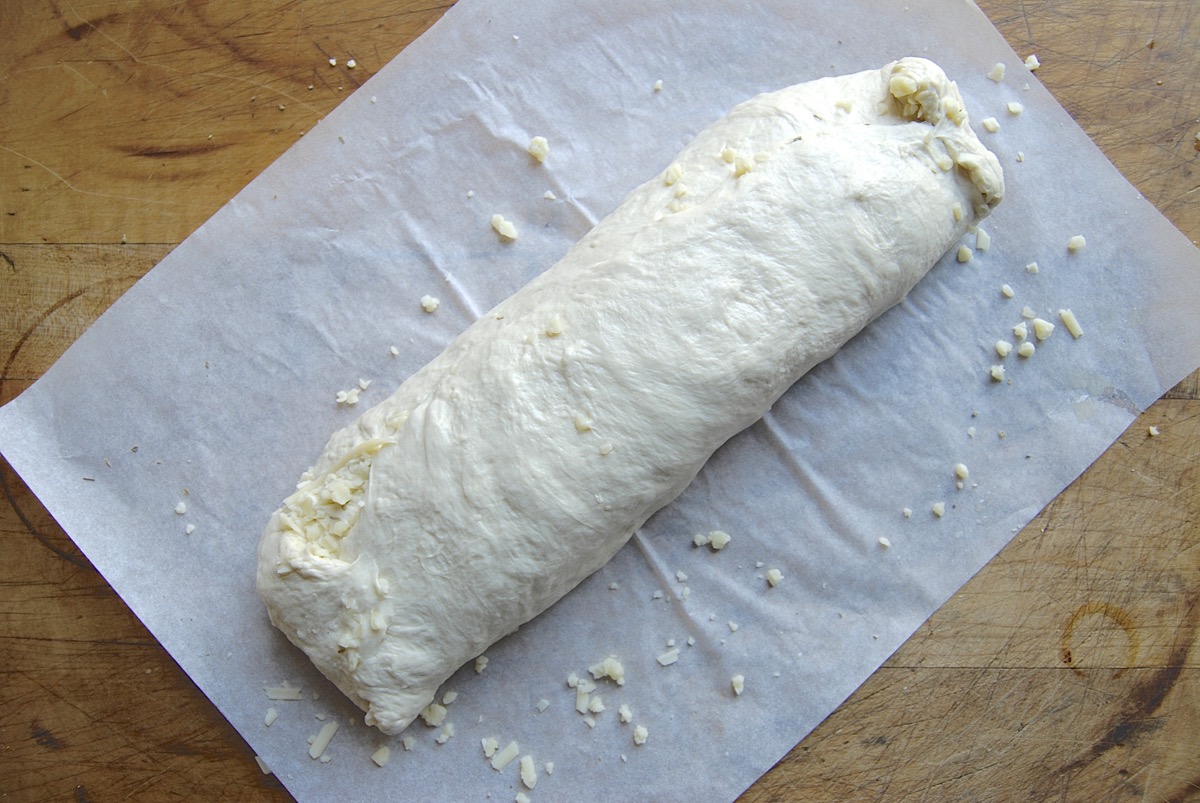
Pinch the seam and the ends to seal.
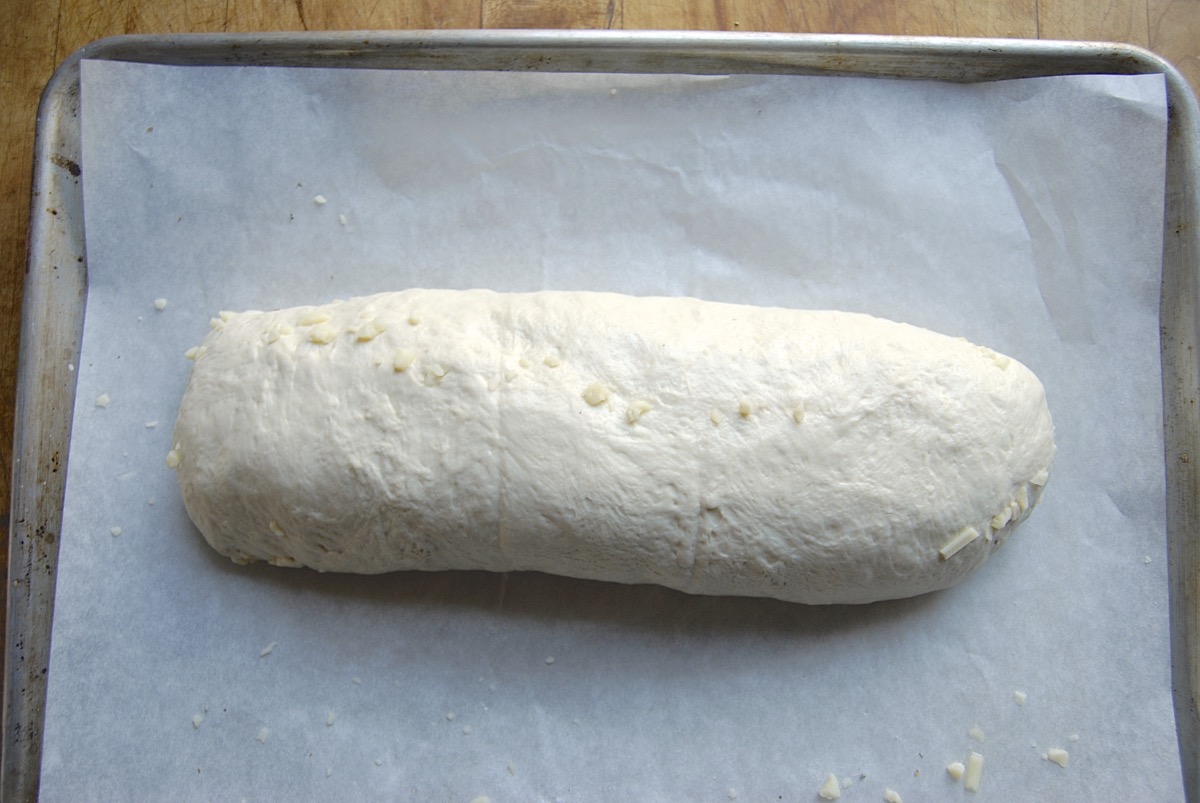
Place the log, seam-side down, on a lightly floured or lightly oiled surface (or leave it on the parchment and place the parchment on a baking sheet, for easiest transport).
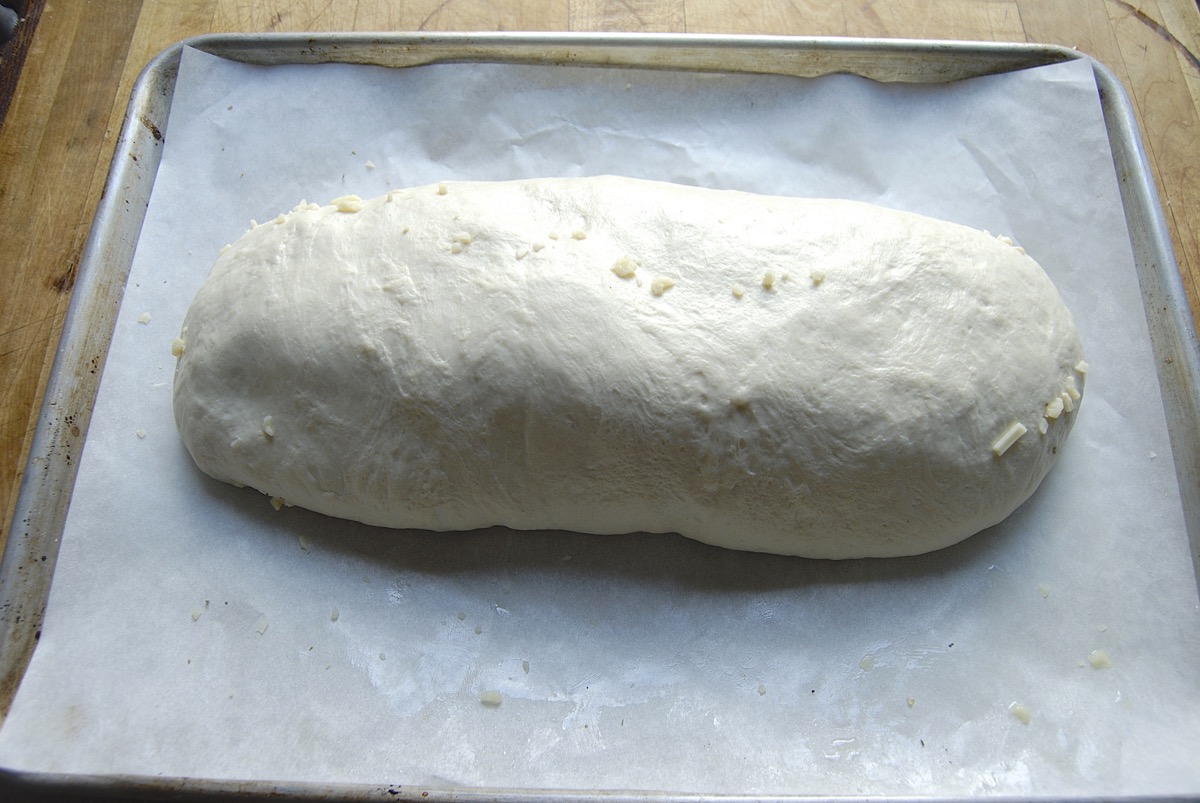
Cover the bread and let it rise until it's puffy though not doubled in bulk, about 1 to 1 1/2 hours.
Towards the end of the rising time, preheat the oven to 425°F. If you're baking two loaves, position a rack in the center of the oven. If you're baking four loaves, place two racks towards the center of the oven with just enough room in between to accommodate the rising loaves.
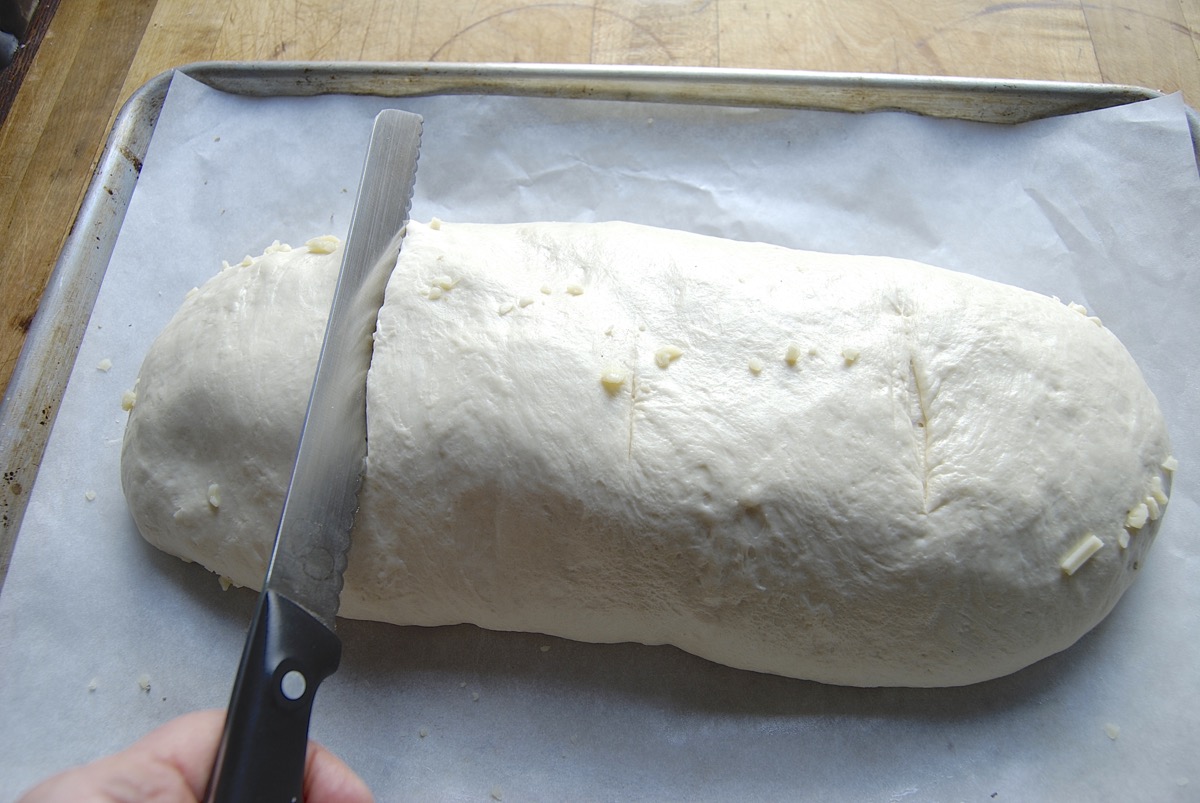
Gently cut the log into four crosswise slices, for mini-breads; or simply cut the dough in half, for two normal-sized loaves. A large sharp knife or serrated knife works well here.
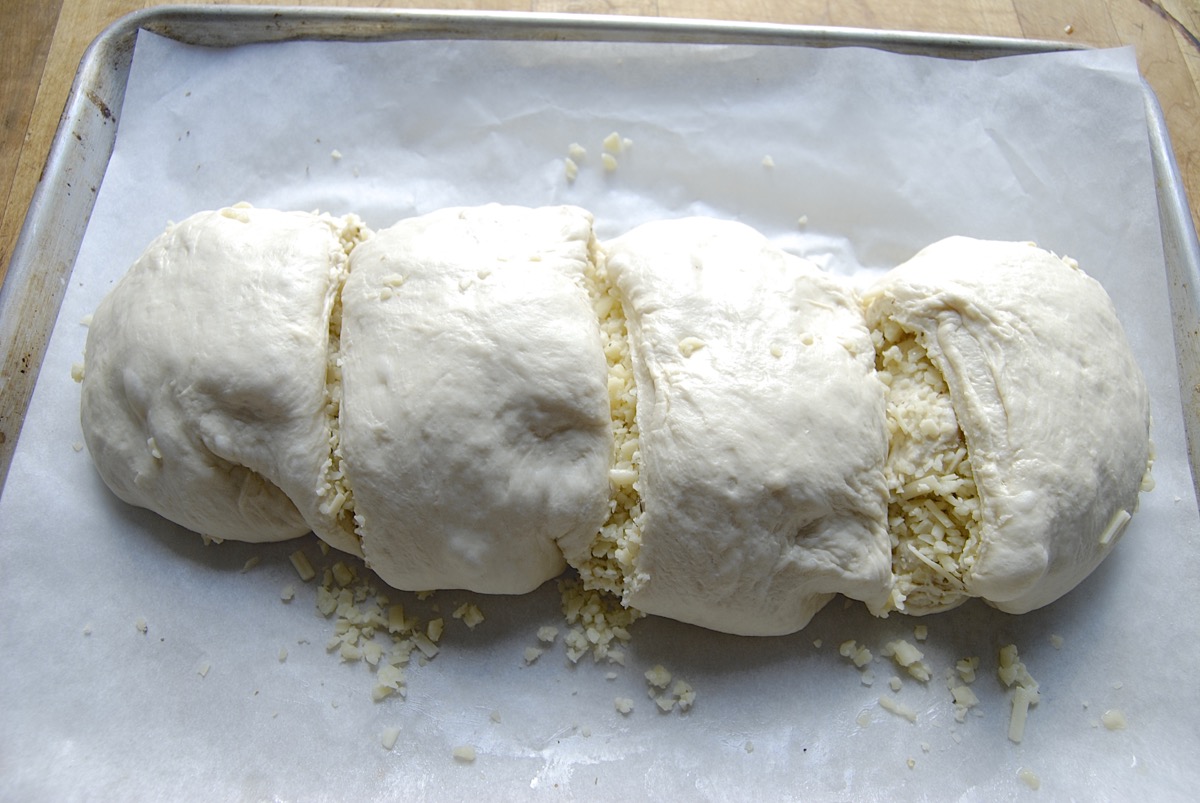
If for some reason you fail to cut all the way through the dough at the bottom, simply take a pair of scissors and snip through the dough.
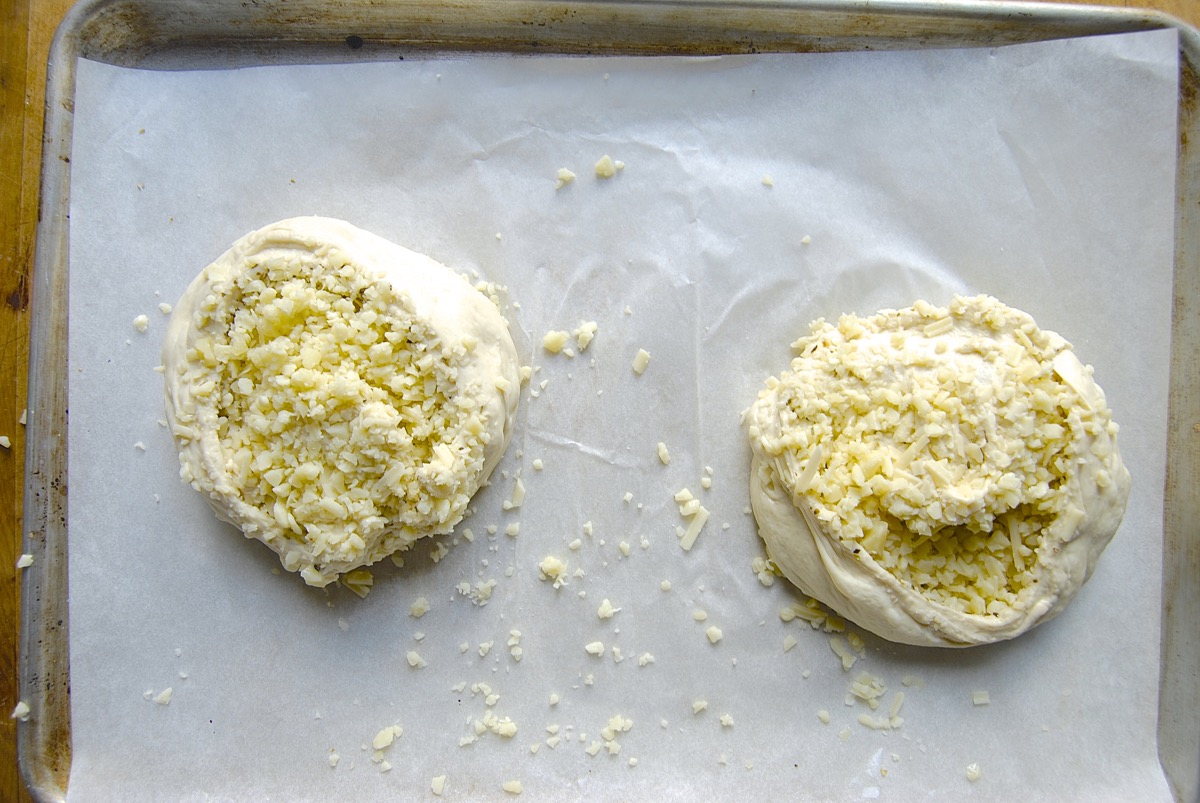
Place the loaves on one (for two loaves) or two (for four mini-loaves) lightly greased or parchment-lined baking sheets, cut side up. Spread them open a bit at the top, if necessary, to more fully expose the cheese.
Spritz the loaves with warm water; this helps keep their top crust moist as they begin to bake, enhancing oven-spring (rise in the oven).
The loaves will have deflated a bit as you handle them; but if you place them in the preheated oven immediately, they'll pick right up again.
Note: If you're at all anxious about successfully handling the fragile risen dough, feel free to slice the filled log into four loaves before it rises. Place the loaves on a baking sheet, and let them rise before baking.
Bake for 25 to 35 minutes (for the mini-loaves), or 35 to 40 minutes (for the full-sized loaves), or until the cheese is melted and the loaves are a deep golden brown.
If you're baking four loaves on two pans, rotate the pans halfway through the baking time: top to bottom, bottom to top. This will help keep their bottoms from becoming too brown.
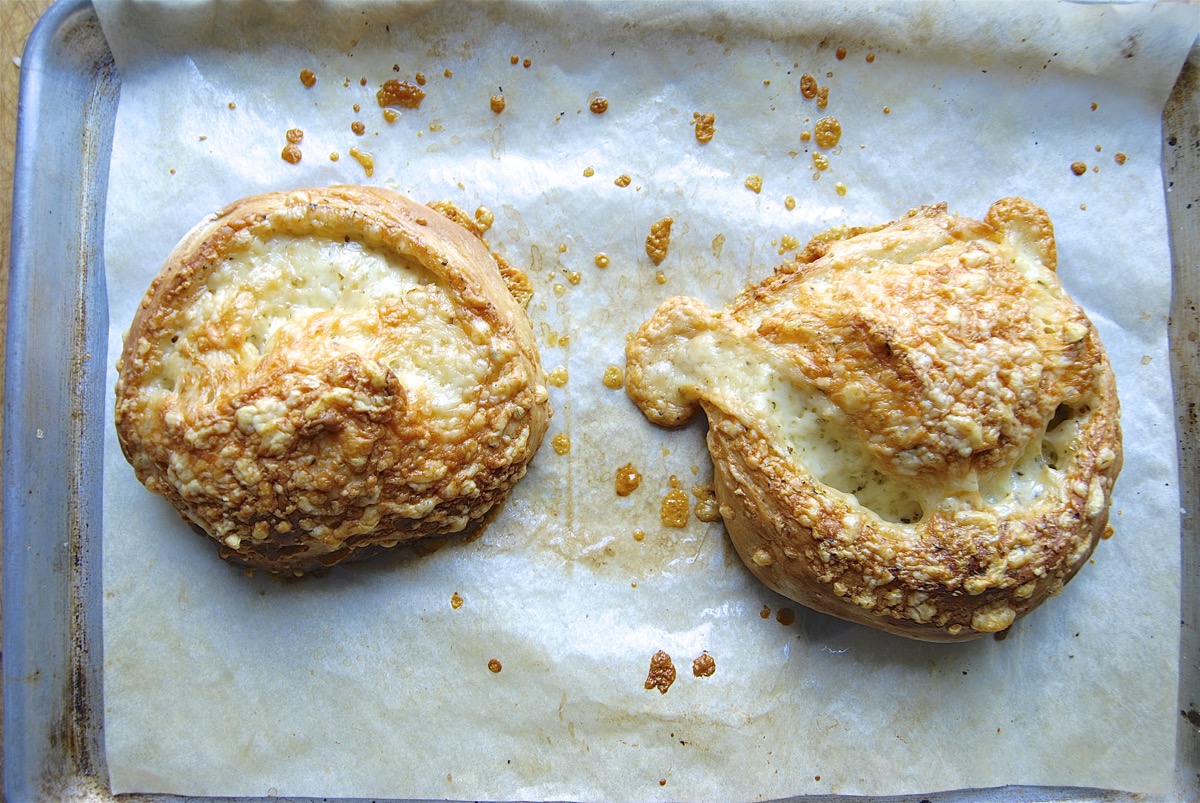
Remove the pans from the oven, and cool the bread (just slightly) right on the pans.
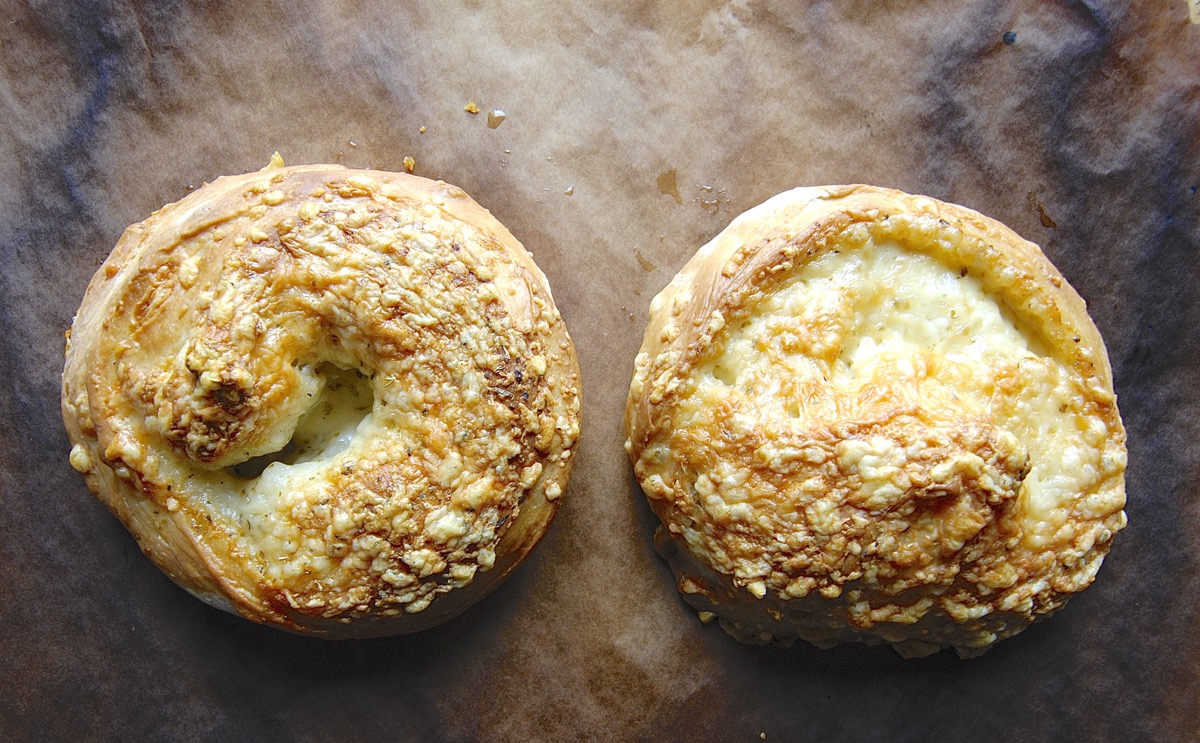
Some loaves become perfect volcanoes of melted cheese; some, like the ones above, are more discreet. But make no mistake, melted cheese is a major part of the experience!
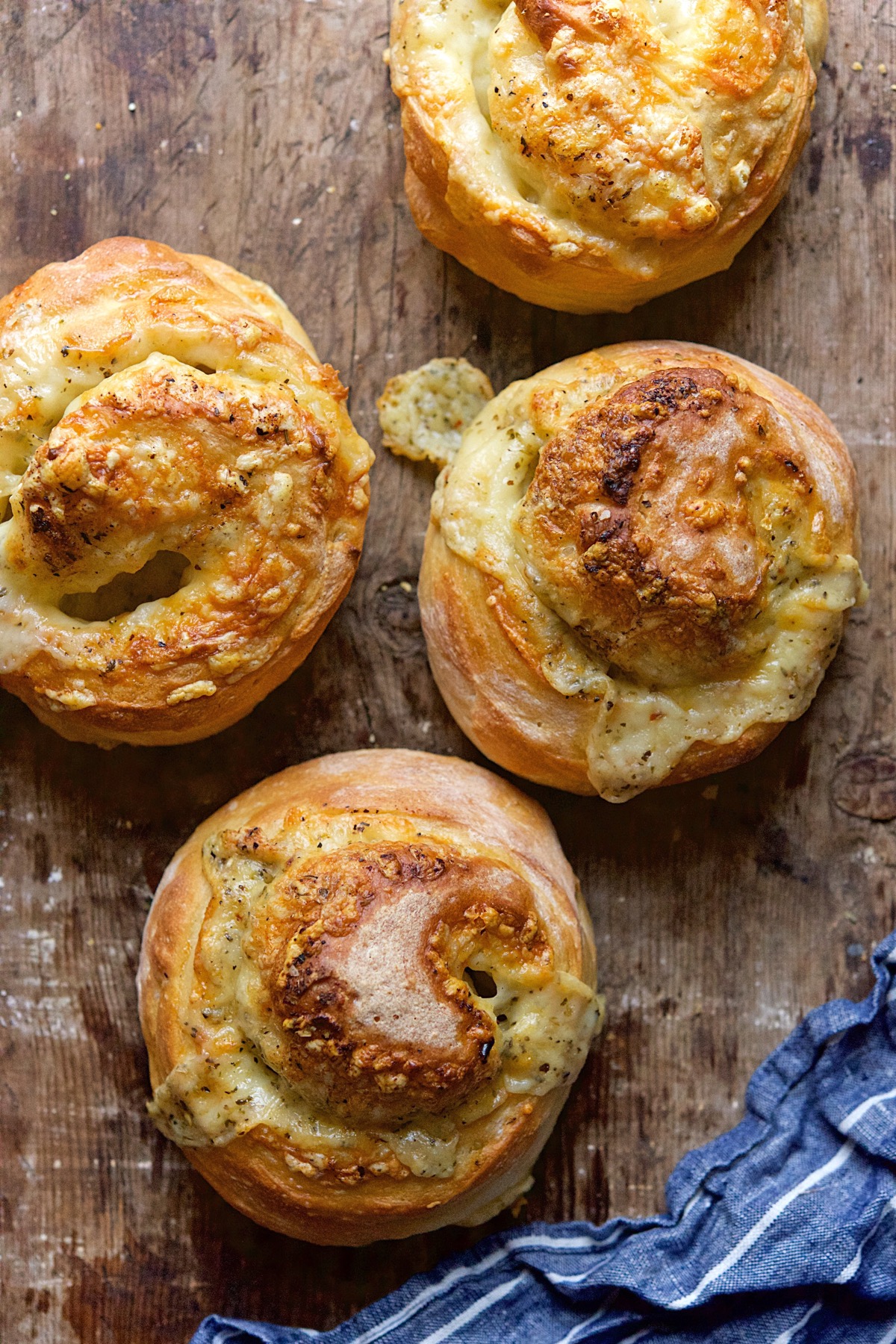
Bread is best served hot: not so blisteringly hot that everyone burns their tongues, but warm-hot. Grip it and rip it! This is a wonderful party bread, perfect for enjoying with friends.
High-altitude adjustments
Do you bake at altitude? Check out our high-altitude baking tips.
Make them whole wheat
Want to make this bread with King Arthur White Whole Wheat Flour? The resulting loaves will be more chewy than crusty, but still delicious. For best results, allow the just-mixed dough to rest for 20 minutes before kneading; this gives the whole wheat flour a chance to absorb the liquid, making it easier to knead. Also, the bread will probably need a bit less time in the oven; start checking it 5 to 10 minutes sooner than you would a loaf made with 100% all-purpose or bread flour.
To make 50% whole wheat loaves: Substitute white whole wheat flour for 50% of the bread flour in both the starter and dough.
To make 100% whole wheat loaves: Substitute white whole wheat flour for all of the bread flour in both starter and dough. When making the dough, you'll probably need to add an additional tablespoon or so of water (up to about 1 1/3 cups water) to make a soft, supple dough. The dough may rise more slowly.
Make them ahead
Prepare the loaves up to the point where they're shaped and on the pan(s). Tent them with greased plastic wrap, and place in the refrigerator overnight. Next morning, remove the loaves from the refrigerator (keep them covered). Let rest at room temperature for 90 minutes before baking as directed. You can also freeze the unbaked loaves to bake later; see the recipe's tip section for details.
Baking gluten-free?
The typical yeast bread recipe doesn’t easily lend itself to being baked gluten-free. We don’t recommend you try to bake these crusty loaves, but instead urge you to check out our tempting array of specially formulated gluten-free bread recipes. And if you're just dying to replicate the warm bread and cheese experience, you can't do better than our yeast-free Gluten-Free Brazilian Cheese Buns — they're out of this world!
One final note: Are you wondering why salt is added to the overnight starter instead of being confined to the dough? And why the filled and shaped dough is allowed to rise before it's cut into individual loaves — rather than letting the individual loaves rise after cutting? This recipe originally came from our friends at The French Pastry School, "the only school in North America dedicated to all things sweet and baked." This is the way they make the bread — and it's delicious. Who are we to argue with success?
Interested in more? See our complete collection of Bakealong recipes.